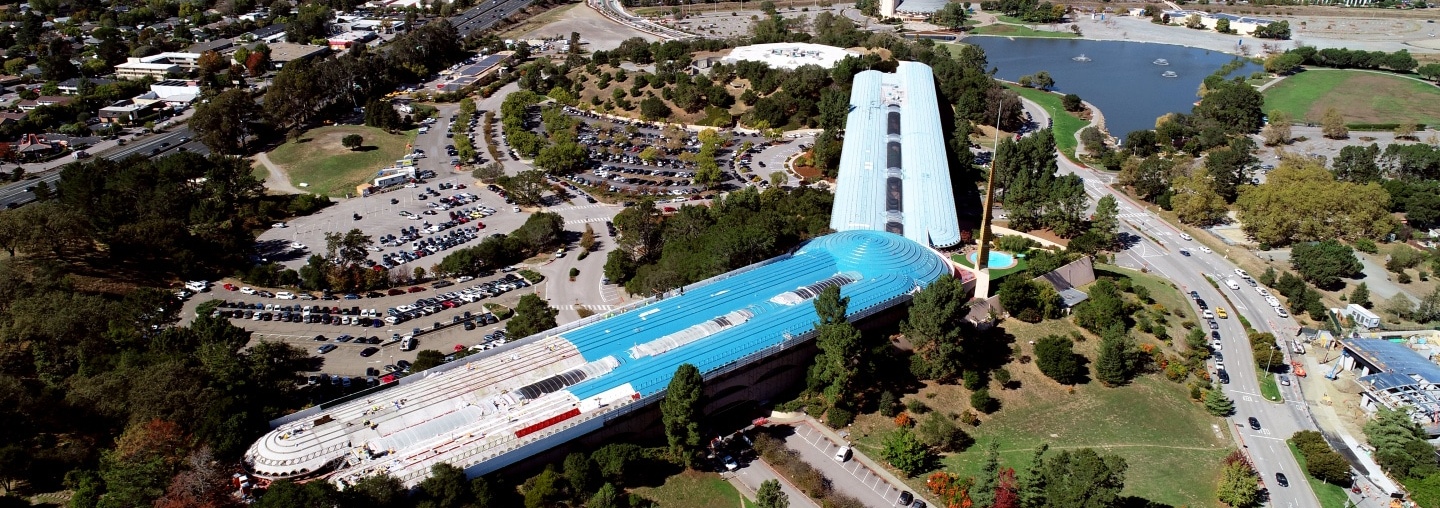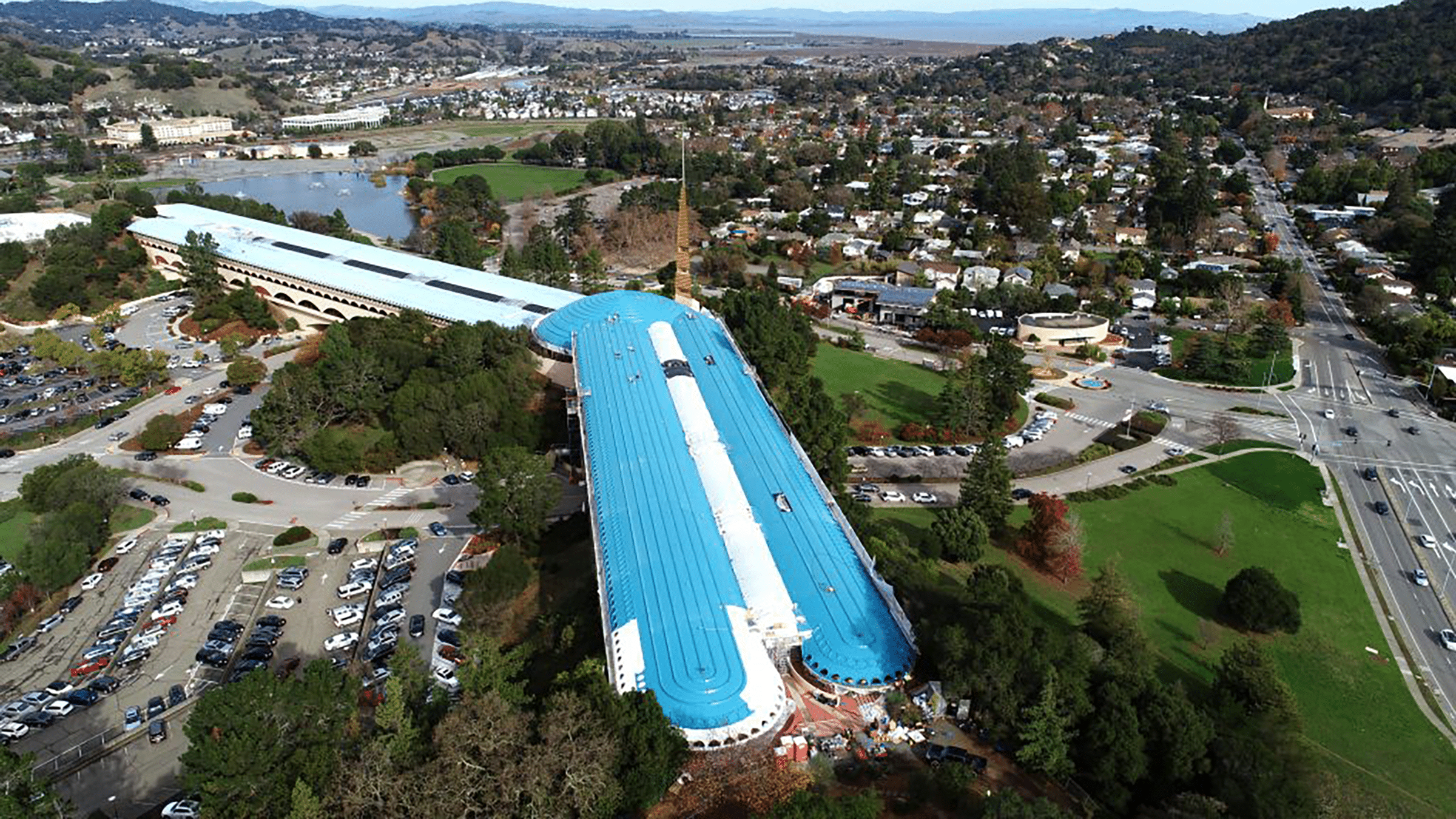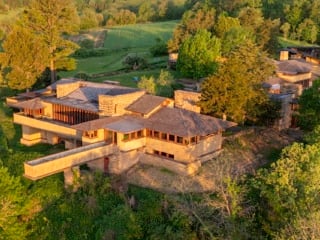
The Surprising History of the Marin County Civic Center Roof
Tierney Hamilton, Marin Cultural Association | Feb 13, 2019
The Marin County Civic Center in San Rafael, California was Frank Lloyd Wright’s largest public project and his last commission. Today the Center is undergoing an ambitious restoration on its iconic blue roof for the first time since its installation 55 years ago.
For nearly a year, the Administration Wing of the Marin County Civic Center has been wrapped in scaffolding. The roof is in the midst of the most ambitious remodel since its installation 55 years ago. For the first time, the roof will be stripped down to its original substrate and overlaid with a brand-new polyurethane coating which will keep the roof color vibrant for at least two decades.
The iconic blue color of the Civic Center roof was not part of Frank Lloyd Wright’s original vision. Like the rest of the Civic Center, the roof was completed and installed after his death in 1959. When he visited the site in August of 1957, the hills were blanketed in dried grass, creating the appearance of gold. As part of Wright’s commitment to organic architecture, wherein a building is in harmony with its environment, the roof was intended to be gold to match the natural beauty of Marin in summer. Like many of Wright’s other concepts for the Civic Center, the technology at the time simply did not exist to paint the roof gold. We have Wright’s widow, Olgivanna Lloyd Wright, to thank for the stunning blue that was used in its place. She suggested the same color used on the Wauwatosa, Wisconsin Annunciation Greek Orthodox Church designed by Wright in 1956.

Photo courtesy of Marin County Civic Center.
The roof is made of concrete and was precast in Petaluma. Once completed, sections of the roof were delivered to San Rafael by barge. By this time, Wright was well-versed in the material, having been one of the first to put it to use in buildings in the 1920s.
After the murder of his paramour Mamah Cheney, Wright moved to California to join his son, Lloyd Wright. There, he used concrete in the Hollyhock House, and in his four textile block homes: the Ennis House, the Millard House, the Samuel Freeman House, and the Storer House. These homes served as Wright’s laboratory for using precast concrete in his designs. He saw it as a personal challenge. He is quoted by Bruce Brooks Pfeiffer and Gerald Nordland’s in their book Frank Lloyd Wright: In the Realm of Ideas: “What about the concrete block? It was the cheapest (and ugliest) thing in the building world. It lived mostly in the architectural gutter as an imitation of rock-faced stone. Why not see what could be done with that gutter rat? Steel rods cast inside the joints of the blocks themselves and the whole brought into some broad, practical scheme of general treatment, why would it not be fit for a new phase of our modern architecture? It might be permanent, noble, beautiful.”
Wright brought the beauty he saw in concrete to his design of the Marin County Civic Center roof. As it is repaired and refinished, it’s a great opportunity to appreciate this unremarkable material. When the project is completed next year, Marin residents can enjoy the beautiful blue for years to come.



